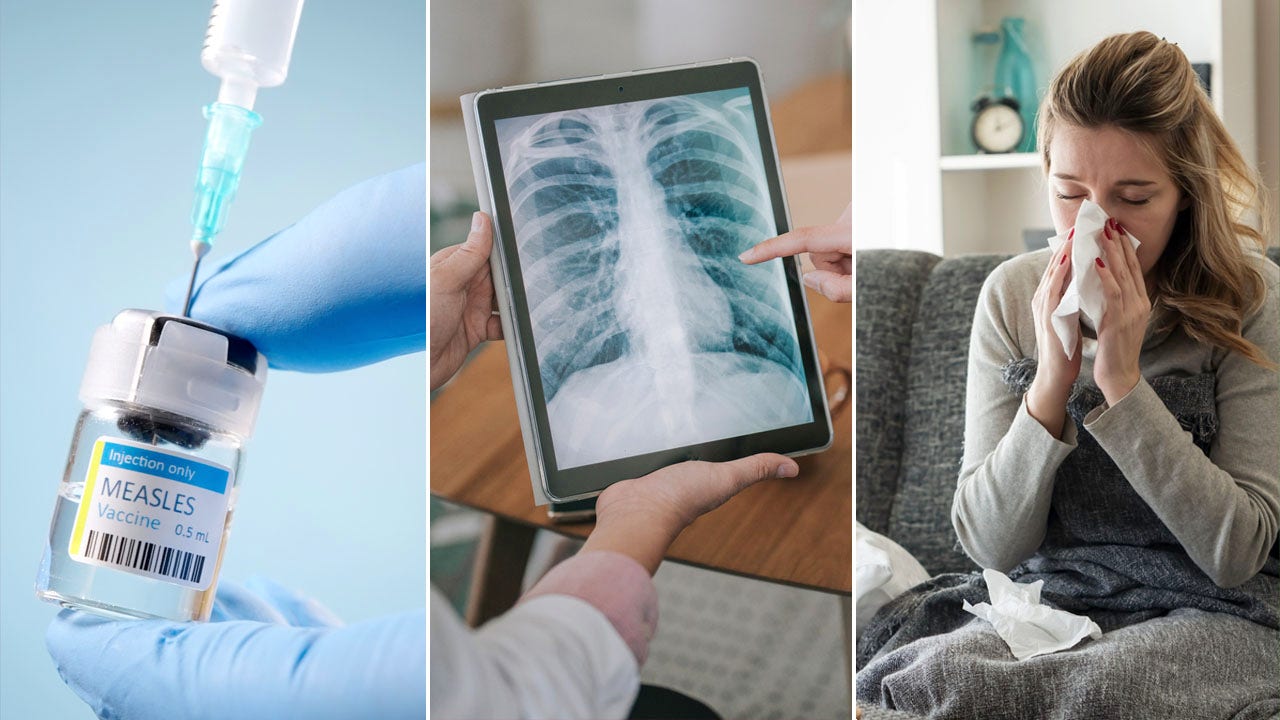Analyzing the Surge: Flu, Measles, and Alarming Cancer Trends Across States
As the seasons change and the air turns crisp, a familiar specter emerges: flu season. However, this year, alongside the rising flu cases, health officials are grappling with another public health concern – a resurgence of measles outbreaks and troubling trends in cancer diagnoses. This trifecta of health challenges poses significant implications for public health and underscores the need for vigilance within communities nationwide.
Flu Season: A Rising Tide
The flu, or influenza, is traditionally a seasonal virus that peaks during the colder months. This year, reports indicate an early surge in flu cases across multiple states. The Centers for Disease Control and Prevention (CDC) has noted a considerable uptick in hospitalizations linked to influenza, raising alarms among health professionals.
With symptoms that can range from mild to severe, the flu can lead to serious complications, especially in vulnerable populations such as the elderly, young children, and individuals with pre-existing health conditions. This year, the strain circulating appears to be particularly virulent, contributing to increased hospital visits and fatalities.
Understanding the Flu Strain
This year’s dominant flu strain is H3N2, known for its ability to mutate frequently. This mutation can make vaccination less effective, leaving populations at greater risk. Vaccination remains the most effective tool in combating flu, yet vaccine uptake has been inconsistent across various demographics, particularly in areas with lower healthcare access.
- Vaccination Rates: The CDC reports that fewer individuals received their flu shots last year, which may contribute to the current surge.
- Public Awareness: There’s a pressing need for public health campaigns to encourage vaccination and educate communities about the importance of flu prevention.
- Access to Healthcare: Disparities in healthcare access continue to hinder efforts to mitigate flu outbreaks in certain regions.
Measles Outbreak: A Wake-Up Call
Compounding the flu situation is a notable resurgence of measles, a highly contagious viral disease that can lead to severe complications, including pneumonia and encephalitis. This outbreak serves as a stark reminder of the fragility of herd immunity in the face of declining vaccination rates.
In recent months, states such as New York and California have reported clusters of measles cases primarily among unvaccinated populations. The anti-vaccine movement, spurred by misinformation, has significantly contributed to vaccine hesitancy, undermining decades of public health progress.
The Importance of Vaccination
Vaccination against measles is not just a personal choice; it’s a public health imperative. To achieve herd immunity, approximately 95% of the population must be vaccinated. With rates falling below this threshold in some areas, the risk of outbreaks escalates.
- Community Engagement: Community leaders and healthcare professionals must work together to address vaccine hesitancy by providing accurate information and dispelling myths surrounding vaccinations.
- Education Initiatives: Schools and local organizations can play a pivotal role in facilitating vaccination drives and educating parents about the benefits of immunization.
- Policy Advocacy: Advocating for policies that support mandatory vaccinations in schools could help bolster community immunity and protect vulnerable populations.
Alarming Cancer Trends
While flu and measles are capturing headlines, another unsettling trend is emerging: rising cancer rates across several states. According to recent studies, certain cancers, including breast, colorectal, and prostate cancers, have seen increased diagnoses and mortality rates. This trend is particularly concerning given the advancements in early detection and treatment options available today.
Health experts attribute these rising rates to a combination of factors, including lifestyle choices, environmental exposures, and delayed screenings during the COVID-19 pandemic. The pandemic led to many individuals postponing routine health checks, resulting in later-stage cancer diagnoses that could have been detected earlier.
Factors Contributing to Rising Cancer Rates
- Delayed Screenings: Many people missed routine screenings during the pandemic, leading to later-stage cancer diagnoses.
- Lifestyle Factors: Increased rates of obesity, sedentary lifestyles, and poor diet contribute to the overall rise in cancer incidents.
- Environmental Exposure: Exposure to carcinogens in the environment, including pollution and chemicals, is also a contributing factor.
Implications for Public Health
The concurrent rise in flu cases, measles outbreaks, and alarming cancer trends illustrates the complexities of public health challenges. These issues require a multifaceted approach, emphasizing prevention, education, and community involvement.
Preventive Measures and Community Actions
Communities must come together to address these rising health concerns through proactive measures:
- Enhanced Vaccination Campaigns: Increasing accessibility and awareness around vaccinations is crucial for curbing outbreaks.
- Regular Health Screenings: Encouraging routine health check-ups can help catch cancer in its early stages.
- Healthy Lifestyle Promotion: Community programs that promote healthy eating, physical activity, and mental health resources can mitigate some cancer risk factors.
Conclusion: A Call to Action
The rise in flu cases, measles outbreaks, and alarming cancer trends across states is a clarion call for communities and health officials to act decisively. By prioritizing vaccination, encouraging preventive health measures, and fostering education surrounding these issues, we can safeguard the health of our communities and mitigate the impact of these public health challenges.
As we navigate these turbulent times, the resilience of our public health systems and the commitment of individuals to prioritize health will determine our ability to overcome these challenges. Together, we can create a healthier, more informed society that is prepared to face whatever health challenges may arise in the future.
See more WebMD Network



